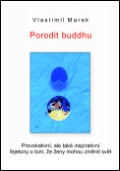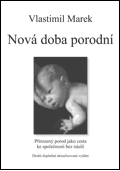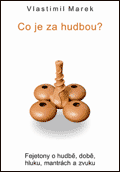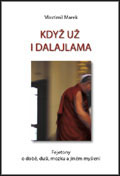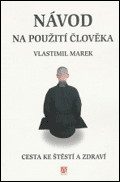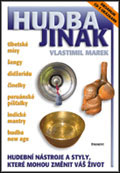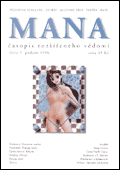Buddhists and those who are embarking on a journey of learning about themselves via Buddhist rules and methods would certainly know the four fundamental noble truths about existence of suffering, the origin of suffering, the truth of cessation and the truth of path leading to this cessation. Or in other words, that the reason for people’s worries and suffering is the fact, that every person has a chance to find out that he suffers because of his fear; and his fears come from being worried about things he likes. And because he doesn’t know that all what he likes as well as everything else he perceives is just an illusion.
Modern neurosciences, using the functional magnetic resonance (which is a method of how to see in real time what is happening in the brain of a happy and an unhappy person in that very moment) have already proved that Buddha was right, and that the ancient Indians with their concept of Maya (illusion) have beaten the western world with this discovery by several thousands of years. It is us, who subconsciously create our own reality and its positive or negative charge; i.e. whether our life and our world is unhappy and full of suffering or it is the opposite, happy and full of joy.
It is not to say that a generally unhappy person would never experience moments of happiness (for example, when he buys a new car, or make love to his new girlfriend/lover, or when his online bank account increases by a sum of imaginary money). It is also not to say, that a generally happy person would never experience some moments of worries (or suffering). It is about our perception on the whole, the full range of emotions – simply put – the whole manifestation of life.
And it is also about being able to positively resolve the moments of crisis. Buddha was the first who has been able to overcome the programs of his mind through the intense meditation (this was 2600 years before the existence of the western medicine that he has made the discovery of neuroplasticity on himself. Neuroplasticity is an ability of the brain to change structurally and functionally in a direct dependence on whatever long term regular activity it performs). Buddha was able to change the way his brain reacted to the common everyday stimuli. He then found out that it was possible to re-program the way how a person perceives his suffering (because if the brain focuses on and “practices” the suffering, after some time the person will have difficulties recognizing and feeling anything else than suffering, and in the end he will find some comfort in it). At that time, Buddha was the only one who discovered this and taught his disciples how to get out it.
He came up with some simple rules which would help “practice” and escape the vicious circle of negative thinking which could only produce more and more negative thoughts (and their corresponding bodily reactions). At that time, there were no other levels, only the beginners. His four truths describe the status at the very beginning of the (remediation) Path. Perhaps, he might have re-phrased his four truths if he was here today (now that we know more about human behaviour and physiology), because many people have already achieved enlightenment and even more of them regularly meditate and trying to achieve the enlightenment. Perhaps it might sound like this:
There is happiness, good health and comfort. There are conditions of happiness, good health and comfort. There is a possibility to achieve happiness, good health and comfort. And there are methods on how to achieve happiness, good health and comfort. In detail (and re-phrased from the explanation of the Four Noble Truths) it might also sound like this: Life could and should be full of moments of joy and happiness (like when a healthy, well looked after, two-year old child plays in closeness of his loving mother). And life really is Happiness, good health, joy and comfort with only the smallest of pain received when exploring the world around (which only serves purpose of indication of normal physical and emotional needs).
The Conditions of achieving and achievement of happiness, good health and comfort are well known: happy pregnancy which is filled with love, good (organic) food, natural (and best) orgasmic birth giving and then at least a year of constant care of loving and hormonally balanced mother as well as the next years filled with appreciation, praise and love (so that a perfect and stable structure of fundamental, lifelong and utmost positive emotional base is formed).
The concept of learning through a game and work is closely connected to it. How could the suffering be ended and how to kick-start (best) permanent happiness, good health and comfort? For example, by abolishment of institutionalism and male dominated and lead birth giving procedures; by educating girls and young women about methods how to achieve happiness, good health and comfort of their children, by using new types of assistants and counsellors rather than the teachers; by changing (the taxation, social and pension) attitudes of the system toward the motherhood and upbringing of the next generations, as well as older generations who are part of a family.
Methods of achievement of happiness, good health and comfort are well known to those who seek them. And they do work. Buddha’s eight segment path of various physical and mental training can help a great deal even now after 2600 years, and it serves as a great example to all of us (and perhaps especially those programmed by the culture of a suffering crucified person).
And how beautiful would a re-phrasing of a certain Buddha’s speech sound:
What is the noble truth about happiness, good health and comfort like? A birth can be orgasmic and full of happiness, an illness can be only a bad song in its beginning – which can be re-tuned by just another song, a death would be a wonderful social and family ritual at the end of the happiest life of every single person (which would be the pension years), and pain would be a welcome experience on the path to deepen the art of being happy; and a healthily born and brought up person simply wouldn’t desire what he doesn’t need and therefore would never be disappointed if he can’t have it immediately. Spirituality (and its practise in every day life) should be and I believe will be more common in future and it will bring happiness, good health and comfort not only to the individuals but to whole societies. Spiritual people, as can be already proved, are happier, healthier and at peace (as well as being more ecological) than those at the beginning of finding out the existence of their suffering, its origins, the possibility of cessation and methods leading to the cessation.
For them the four Buddha’s truths are an important discovery (it’s a discovery of a trap into which the human beings have fallen a couple of thousand years ago). This is already a good sign of a “win” situation, because we can’t get out of a trap until we realize we’re in it. And once we work it out, we’ll be able to leave the four noble truths to the beginners as we will be living our lives in joy, happiness, good health and comfort.
Most importantly, our feeling of happiness can’t last. We will always want more and more (of everything) and we are constantly unsatisfied. We seem to feel constantly unhappy, seeking bigger experiences, emotions or more things to own. I believe, this is what the Buddha was talking about; and where the word “suffering” is just an inadequate modern translation. In this meaning, it is the anthem of our lives, best described in the Rolling Stones song “I can get no satisfaction”. Not so much about a physical suffering but more about our inextinguishable hunger and lust for things.
Vlastimil Marek, pondělí 18. květen 2009







